Strong explosive eruption at Etna volcano, Aviation Color Code raised to Red, Italy
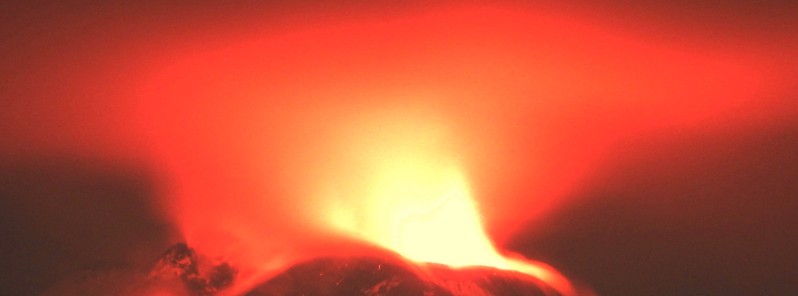
A new paroxysmal eruptive episode started at Etna volcano, Italy on the morning of December 21, 2020. The Aviation Color Code has been raised to Red at 09:34 UTC.
According to the Etna Volcano Observatory, a strong intensification of strombolian activity started at Etna's Southeast Crater at 09:08 UTC.
The weather conditions don't allow continuous observation of the current phenomenon.
From a seismic perspective, the average amplitude of volcanic tremor in the Southeast Crater has high values.
Infrasonic activity is also very sustained, with high values both in the frequency of occurrence and in the amplitude of infrasonic events.
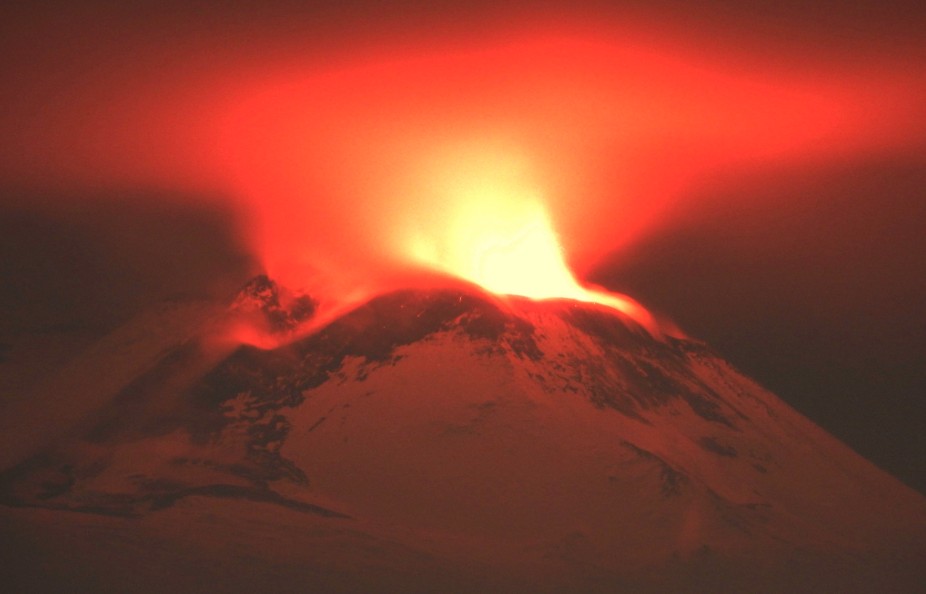
Eruption at Etna volcano at 01:00 UTC on December 21, 2020. Credit: Boris Behncke/INGV
"Volcanic cloud height is currently not estimable," Etna Volcano Observatory said in VONA released 09:34 UTC. "Ash cloud is moving toward south. The phenomenon is observed by visible and thermal surveillance cameras."
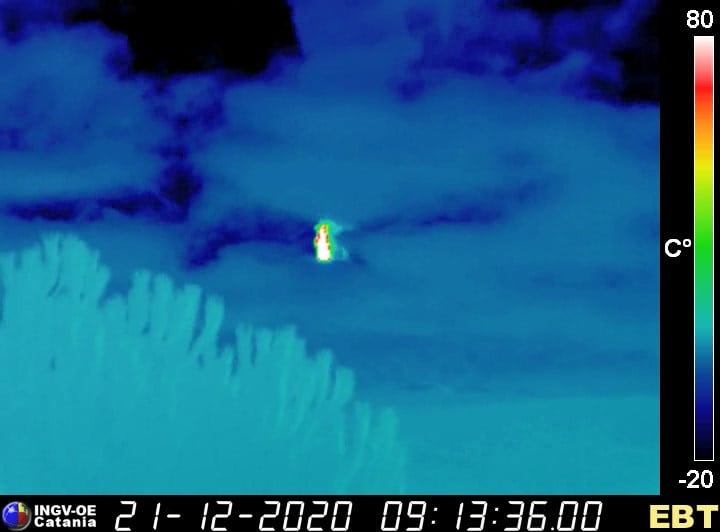
Source: INGV
Etna in eruzione in questo momento, la nube eruttiva da un volo di linea (foto Giacomo Imposa) #etna #sicilia #sicily #italia #italy pic.twitter.com/F6tUyErc7s
— lasiciliaweb (@Lasiciliaweb) December 21, 2020
Strombolian activity at the easternmost mouth of the Southeast Crater started at the beginning of December 2020 and rapidly intensified on the evening of Sunday, December 13, with lava fountaining, and pyroclastic and lava flows.
Lava fountaining during the first phase lasted a few tens of minutes and ended just before 23:00 UTC on December 13. Strombolian activity intensified at around midnight UTC on December 14, culminating in the second phase of lava fountaining, also lasting about 10 minutes.
Modest Strombolian activity continued throughout the rest of the night and morning, while the effusive activity ceased, and at dawn, there were few incandescent spots on the southwestern flow front.
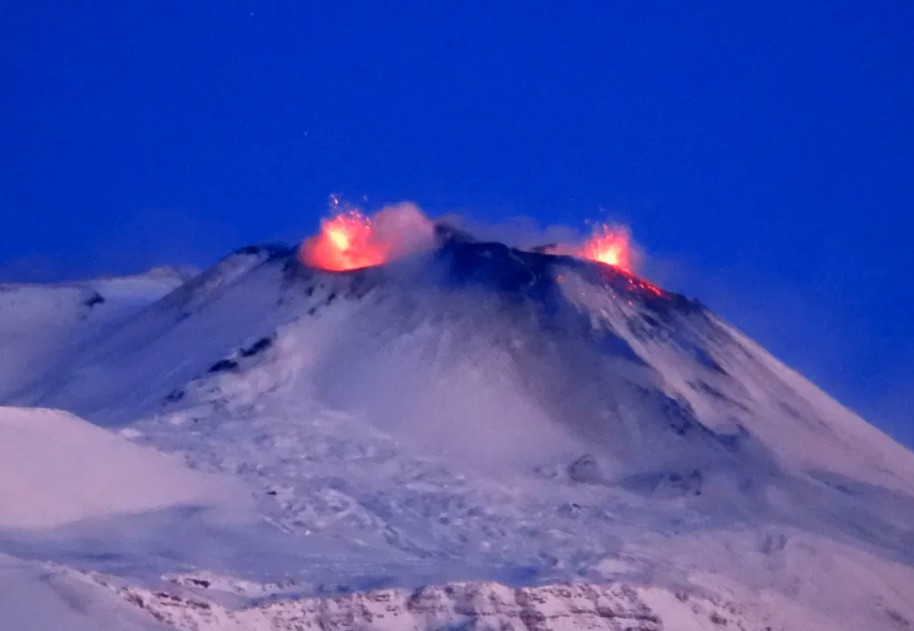
Simultaneous strombolian activity at Etna on the morning of December 2, 2020. Credit: INGV
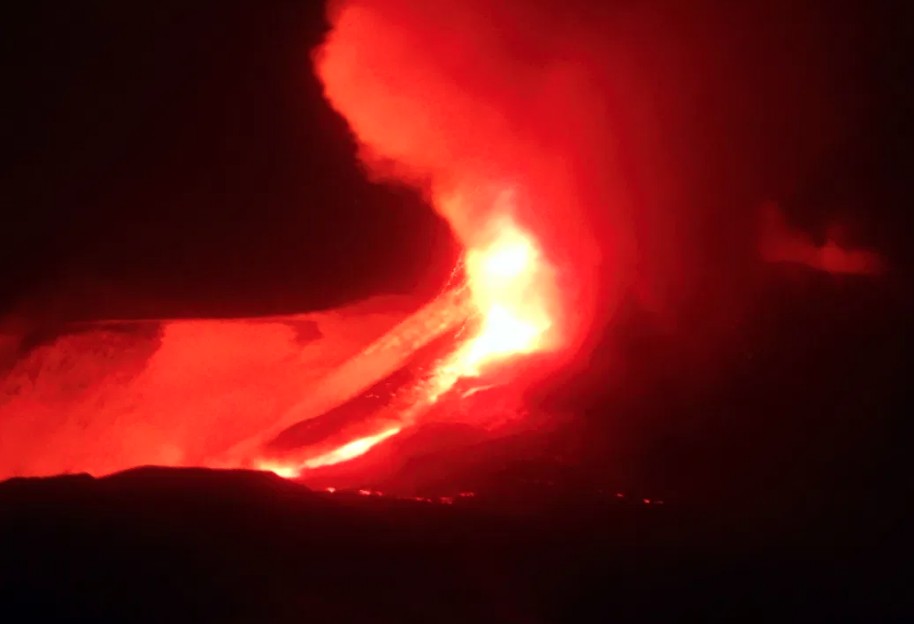
Fountains and lava flows during the second paroxysmal phase of the eruptive episode on the night between December 13 and 14, 2020. Credit: INGV
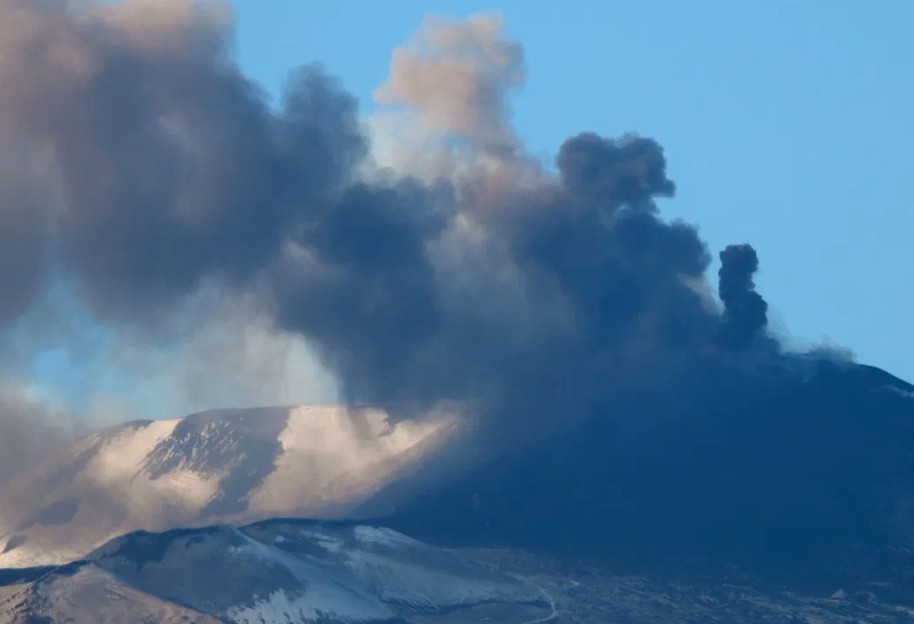
Ash emission from the Southeast Crater on the afternoon of December 14, 2020. Credit: INGV
Strombolian activity intensified again on the morning of December 15, affecting three eruptive vents on the Southeast Crater, and decreased again before the night.





Geological summary
Mount Etna, towering above Catania, Sicily's second-largest city, has one of the world's longest documented records of historical volcanism, dating back to 1500 BCE. Historical lava flows of basaltic composition cover much of the surface of this massive volcano, whose edifice is the highest and most voluminous in Italy.
The Mongibello stratovolcano, truncated by several small calderas, was constructed during the late Pleistocene and Holocene over an older shield volcano. The most prominent morphological feature of Etna is the Valle del Bove, a 5 x 10 km (5.1 x 6.2 miles) horseshoe-shaped caldera open to the east.
Two styles of eruptive activity typically occur at Etna. Persistent explosive eruptions, sometimes with minor lava emissions, take place from one or more of the three prominent summit craters, the Central Crater, NE Crater, and SE Crater (the latter formed in 1978).
Flank vents, typically with higher effusion rates, are less frequently active and originate from fissures that open progressively downward from near the summit (usually accompanied by strombolian eruptions at the upper end).
Cinder cones are commonly constructed over the vents of lower-flank lava flows. Lava flows extend to the foot of the volcano on all sides and have reached the sea over a broad area on the SE flank. (GVP)
Featured image credit: INGV

Please sign this petition: https://www.thepetitionsite.com/473/756/887/support-a-proposal-to-united-nations-for-an-international-day-of-volcanoes/?taf_id=50321912&cid=fb_na&fbclid=IwAR1xWrkligaxfBk8j4wKK8zrizueS-V88Ki3tTCfVSmhJAzSPumGBjMC0zc
The increase of gamma rays emission from the Sun is already having an effect on our planet, and it will intensive in the next 36-48 hours. Please keep in mind, that the gamma rays produced by the Sun is not the result of thermonuclear furnace which is supposed to be responsible for the primary energy source of the Sun. Thermonuclear reactions took place in the mystic mind of Stanley Eddington and enforced it on the scientific community with the help of other ambitious theoreticians, just like his fake solar eclipse experiment of May 29, 1919.